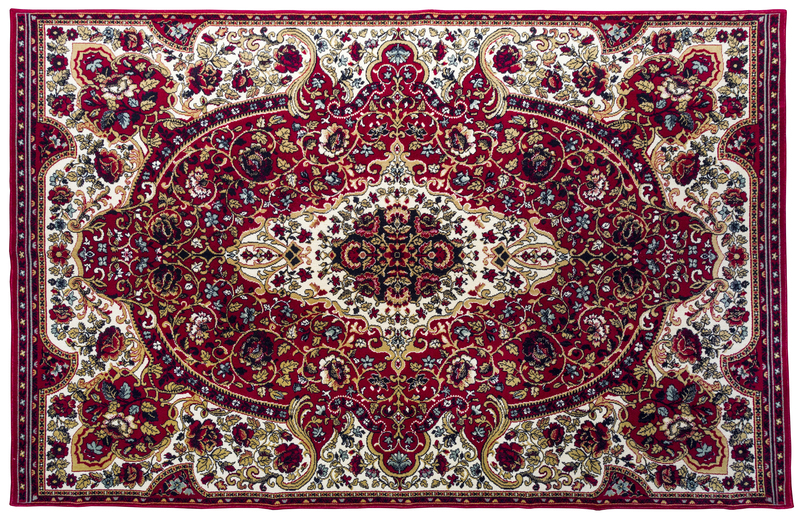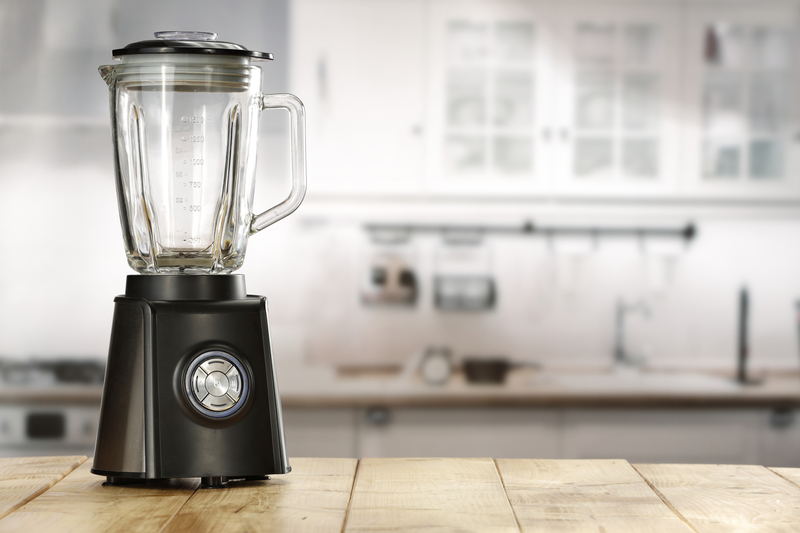Lifestyle Changes for Sustainable Allergen and Dust Reduction
Posted on 20/06/2025
Introduction to Lifestyle Changes for Sustainable Allergen and Dust Reduction
Living with allergies or respiratory sensitivities can be challenging. Dust and other allergens infiltrating homes and offices are common culprits behind sneezing, congestion, and even serious health issues. As awareness about the importance of indoor air quality grows, so does the need to make sustainable lifestyle modifications. By mastering lifestyle changes for sustainable allergen and dust reduction, you can transform your home into a cleaner, healthier haven for you and your loved ones.

Understanding Allergens and Dust: The Basics
Allergens are substances that trigger allergic reactions. These can be biological, like pollen, mold spores, pet dander, and dust mites, or chemical, such as household cleaners and fragranced products. Dust is a complex mixture of fine particles, including dead skin cells, textile fibers, soil, allergens, and pollutants.
To create a sustainable allergen and dust reduction plan, it's essential to understand their sources and how they can accumulate within our living spaces.
Main Sources of Indoor Dust and Allergens:
- Carpets and Rugs: Trap dust and allergens in their fibers.
- Upholstery and Bedding: Accumulate dead skin cells, dust mites, and pet dander.
- HVAC Systems: Circulate dust and pollen if not properly maintained.
- Clutter: Provides surfaces for dust to settle and collect.
- Pets: Shed dander and fur, and can track in outdoor allergens.
Impact of Allergen and Dust Exposure on Health
Before diving into practical lifestyle changes for dust and allergen reduction, it's crucial to acknowledge the serious health consequences caused by chronic exposure:
- Respiratory Issues such as asthma, bronchitis, and sinus infections.
- Allergic Rhinitis leading to constant sneezing, runny nose, and eye irritation.
- Aggravation of Skin Conditions like eczema and dermatitis.
- General Fatigue or malaise from sustained low-level inflammation.
Effective Lifestyle Changes for Allergen and Dust Reduction
Maintaining a clean, allergen-minimized environment isn't just about occasional cleaning. It involves incorporating ongoing habits and sustainable choices into your daily routine. Let's explore several lifestyle changes for sustainable allergen and dust reduction that promise long-term results.
1. Adopt a Regular Cleaning Routine
Diligence pays off. Routine cleaning disrupts the life cycles of dust mites and other allergens.
- Vacuum Weekly with a HEPA filter-equipped vacuum to trap particles instead of dispersing them.
- Wet-dust Surfaces using a damp microfiber cloth to prevent dust from becoming airborne.
- Change Bedding Frequently; wash sheets, pillowcases, and blankets at least once per week in hot water.
- Mop Hard Floors regularly, using unscented, eco-friendly cleaners to minimize chemical allergens.
*Tip: Wear a mask while cleaning to avoid inhaling disturbed dust.
2. Reduce Clutter and Simplify Decor
A minimalist approach can dramatically aid in sustainable allergen and dust reduction.
- Limit Soft Furnishings: Replace heavy drapes with washable blinds or shades.
- Declutter Surfaces: Minimize knick-knacks and items that attract dust.
- Opt for Hard Floors: Consider wood, laminate, or tile instead of carpet, especially in bedrooms and living areas.
3. Control Indoor Air Quality
High-quality indoor air is the cornerstone of allergen and dust management.
- Use HEPA Air Purifiers in common areas and bedrooms to continuously filter allergens.
- Ventilate Regularly: Open windows when possible, but avoid during times of high outdoor pollen.
- Maintain HVAC Systems: Change filters every 2-3 months, and consider professional duct cleaning annually.
4. Opt for Hypoallergenic Furnishings and Bedding
The bedding you sleep on and the furniture you lounge in can make a difference.
- Encased Mattresses and Pillows: Use allergen-proof covers to block dust mites and dander.
- Choose Washable Fabrics: Select slipcovers and pillows that can be laundered regularly.
- Replace Old Mattresses: Mattresses become breeding grounds for dust mites after several years.
5. Manage Humidity Levels
Many allergens thrive in humid conditions, while low humidity can cause dust to become airborne more easily.
- Maintain Indoor Humidity Between 30-50% using dehumidifiers or humidifiers as needed.
- Fix Leaks: Repair dripping taps or pipes to prevent mold growth.
- Vent Bathrooms and Kitchens: Use exhaust fans to prevent moisture buildup.
6. Groom Pets Regularly and Limit Their Exposure
Pets are part of the family, but they're also a major source of dander and hair.
- Brush Pets Outdoors to keep loose fur and dander out of the house.
- Bathe Pets Regularly with gentle, pet-safe shampoos.
- Keep Pets Off Beds and Upholstery: Designate pet-free zones, especially in bedrooms.
7. Prioritize Sustainable, Non-toxic Cleaning Products
Certain household cleaners contain harsh chemicals that can be allergens themselves.
- Opt for Fragrance-Free and Plant-Based Products when possible.
- DIY Cleaning Solutions: Vinegar, baking soda, and lemon juice are effective and reduce chemical residues.
- Avoid Aerosol Sprays which can distribute fine particles into the air.
8. Invest in Sustainable Organization and Storage Solutions
Smart storage can limit dust accumulation and make cleaning less cumbersome.
- Use Closed Storage Bins: Store seasonal clothing and linens in sealed, washable containers.
- Rotate Toys and Books: Keep only essentials out and store the rest to reduce surfaces that gather dust.
- Organize Entryways: Encourage shoe removal and use mats to trap dirt and allergens at the door.
9. Embrace Green and Sustainable Materials
Your choices in furniture, decoration, and construction play a lasting role.
- Choose Natural Products: Wool rugs (regularly cleaned), solid wood furniture, and organic textiles are preferable.
- Avoid VOCs: Select paints, finishes, and flooring that are explicitly low in volatile organic compounds (VOCs).
10. Prevent Outdoor Allergens from Entering
Sometimes, allergens come from outside, especially in pollen seasons.
- Keep Windows Closed: During high-pollen, windy, or stormy days.
- Wash Hands, Face, and Hair: After outdoor activities to remove traces of pollen and dust.
- Launder Outdoor Clothes Separately: To prevent cross-contamination in your home.
- Maintain Garden and Entryways: Trim grass, manage pollen-producing plants, and keep walkways swept.
Sustainable Living: Preventative Tips and Healthy Habits
Achieving lasting allergen and dust reduction isn't simply about reacting to problems. It's about preventative action and adopting habits that safeguard indoor air quality over the long term.
- Routine Inspections: Regularly check your space for signs of mold, leaks, and dust build-up.
- Educate Your Household: Teach children and family members about the importance of allergen reduction habits.
- Seasonal Deep Cleaning: Tackle overlooked areas (behind appliances, under beds) at least twice a year.
- Stay Informed: Keep up with local pollen forecasts and adjust ventilation accordingly.
Combining Technology and Tradition
Thanks to modern advances, it's easier than ever to manage allergen and dust exposure. Tools like robotic vacuums, smart air purifiers, and humidity monitors can automate much of the maintenance described, complementing traditional practices such as routine cleaning and decluttering.
However, sustainable allergen reduction is not just a matter of gadgets or commercial solutions. It's about making thoughtful, mindful choices every day that contribute to a cleaner, healthier atmosphere.
Environmental Benefits of Dust and Allergen Reduction
The transition to sustainable, allergen-conscious living doesn't only improve your health--it also benefits the planet. Sustainable lifestyle changes often align with eco-friendly principles:
- Reduced Chemical Use means less pollution entering water systems.
- Minimized Waste through conscious product choices and less "disposable" decor.
- Energy Efficiency by reducing moisture and controlling HVAC settings.

Frequently Asked Questions
Can indoor plants help reduce allergens and dust?
Certain indoor plants can improve air quality by removing VOCs. However, some houseplants may contribute to mold or attract dust, so choose carefully and clean the leaves regularly.
Are essential oil diffusers helpful or harmful for those with allergies?
While some people enjoy essential oils, diffusers can release airborne particles that might bother sensitive individuals. Always test in small amounts and monitor for reactions.
How often should I wash curtains and soft furnishings?
Aim to wash curtains, sofa covers, and throw blankets every 1-2 months to maintain low dust and allergen levels. More frequent washing may be necessary in high-traffic or high-sensitivity homes.
Is carpet bad for allergies?
Carpet holds onto dust, dander, and allergens, making it harder to maintain a "low allergen" home. Hard flooring options are preferable, but if carpet remains, opt for shallow-pile types and vacuum frequently with a HEPA filter.
Conclusion: Building a Long-Term, Sustainable Allergen-Free Lifestyle
The journey toward sustainable allergen and dust reduction is ultimately about embracing holistic, practical changes. By actively adopting healthier habits, investing in sustainable materials, minimizing exposure, and maintaining improved organization, you're paving the way to clearer air and a healthier life. Consistency and awareness are your greatest allies. Start small, build sustainable routines, and enjoy the peace of mind that comes with a truly clean, allergen-reduced home.
Whether you're struggling with seasonal allergies or committed to a greener lifestyle, these lifestyle changes for long-term allergen and dust reduction will help create a lasting, comfortable, and safe environment indoors. Begin today--a healthier tomorrow starts at home!




